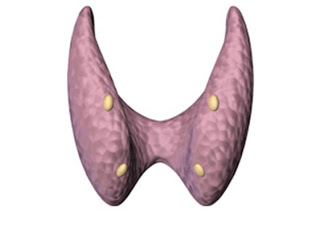 One of the diagnostic dilemmas which frequently comes up in the outpatient evaluation of hypercalcemia (and also, I’m told, on boards-type exams) is how to differentiate familial hypocalciuric hypercalcemia versus primary hyperparathroidism–both of which are common causes of hypercalcemia. The short answer: check the urine calcium–it should be low in FHH but normal to high in primary hyperparathyroidism.
One of the diagnostic dilemmas which frequently comes up in the outpatient evaluation of hypercalcemia (and also, I’m told, on boards-type exams) is how to differentiate familial hypocalciuric hypercalcemia versus primary hyperparathroidism–both of which are common causes of hypercalcemia. The short answer: check the urine calcium–it should be low in FHH but normal to high in primary hyperparathyroidism.
Primary hyperparathyroidism, as we are all aware, usually results from either a parathyroid gland adenoma or 4-gland parathyroid hyperplasia. The PTH level is either high or inappropriately normal, and as a result there is constant high urinary calcium reabsorption, constantly high Ca reabsorption from bone, and increased 1,25-OH vitamin D synthesis leading to increased Ca uptake in the gut. The urine calcium concentration is high; hence, the increased risk of nephrolithiasis in these patients. Also, the urine concentrating ability may be diminished in primary hyperparathyroidism.
In contrast, the defect in familial hypocalciuric hypercalcemia is genetic–an autosomal-dominant-inherited mutation in the calcium-sensing receptor gene. Despite hypercalcemia, PTH levels are normal to only mildly elevated. The urine calcium concentration is low (often measured as the urine calcium:creatinine ratio, which in FHH should be

